Moses Gomberg in Ann Arbor
(b)
Ann Arbor, Michigan, must have seemed like
paradise to Moses Gomberg who had fled Elizabetgrad, Ukraine, in 1884
at the age of 18 during the pogroms
following the assassination of Czar Alexander II, and spent his first
two years in America as an immigrant in Chicago. Though he had been
well educated in a Russian gymnasium, it is thought that he did not
speak English on arrival in America. He must have learned quickly,
because in addition to working in the Chicago Stock Yards he was able
to supplement his education by studying at Lake High School in
Chicago.
|
|
Gomberg entered the University
of Michigan as a freshman in
1886,(a)
and for the rest of his life, except for a year in
Germany, a term in California, and a few trips, he
would live within easy walking distance of its
Chemistry Laboratory.
|
|
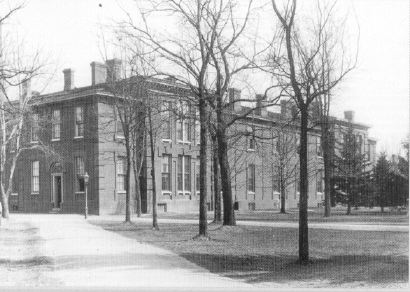
|
|

|
|
After 4 years as an undergraduate Gomberg
earned the B.S. in Chemistry and Crystallography in 1890. He
then entered graduate school in Organic Chemistry under the
supervision of Professor A. B. Prescott, M.D. (1832-1905),
who was Professor of Organic Chemistry, Director of the
Chemical Laboratories and Dean of
Pharmacy.(p)
Prescott, a cripple since childhood, was an unusually kindly
and accomplished mentor. Although he would present the work
of his students at scientific meetings, he would rarely
include his own name as author. He had served as President
of the American Chemical Society in 1896.
Prescott's most noted research involved
analyzing iodide complexes of the alkaloids. His
vice-presidential address to the 1887 New York meeting of
the AAAS was entitled "The Chemistry of Nitrogen as
Disclosed in the Constitution of the Alkaloids." He
concluded the address with a discussion of diazo and azo
compounds and stated "Whatever may be in reserve for future
chemistry,... its importance is sure to belong, in greater
part, to the chemistry of nitrogen."
|

|
|
By at least 1890 Gomberg's sister,
Sophia,(s)
must have come to join him in Ann Arbor. She graduated from
Ann Arbor High School with a diploma in Science in June
1892. Neither sibling married, and they would live together
until his death in 1947. It is not known where, or how long,
their parents lived.(n)
Gomberg became Assistant in Organic
Chemistry in 1891, and the 1892-93 Calendar of the
University listed his address as 69 South University
Avenue to the west of the University where South University
Avenue no longer runs, although it was then home to a number
of young instructors and to the shop superintendent. Bailar
wrote that "During the early days in Ann Arbor, they lived
very humbly, almost like Russian
peasants."(ba)
In 1892 he earned the M.S. degree (one of
four at Michigan that year), and in 1893 he was promoted to
Instructor. In 1894 he was awarded the third D.S. in the
history of the University - the second, and last, in
Chemistry. (The other Chemistry D.S. was awarded to
Frederick G. Novy in 1890(n);
the first Chemistry Ph.D.s would be awarded five years later
in 1899). Gomberg's thesis "Trimethylxanthin and some of
its Derivatives" was an extension of the work of
Prescott.
During his four years living at 69 South
University Gomberg was teaching a number of laboratory
courses in organic analysis and synthesis, often as
assistant to Prescott. In the fall of 1895, after receiving
his doctorate, he began supervising laboratories with the
assistance of Mr. Trowbridge, and he offered his first
independent lecture course, "Chemistry 20. Diazo-compounds,
in both the fatty and the aromatic series of organic
chemistry."
Gomberg was saving money for his 1896-97
postdoctoral research in Munich and Heidelberg, and it would
appear that Prescott was readying him and the department for
this research leave.
In Heidelberg Gomberg gained a
substantial reputation by preparing the long-elusive
tetraphenylmethane through carbon-carbon bond formation
involving nitrogen elimination from an azo compound.
Although the idea for this approach may have blossomed in
his time with Thiele in Munich, who had recently described
AIBN, it is plausible that he had chosen to study azo
compounds with Thiele in part because of his background with
Prescott at Michigan.
|
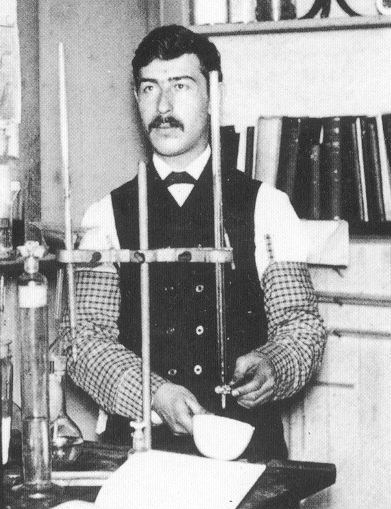
|
|
On his return to teaching in 1897 Gomberg
was again assisted in laboratory teaching by Mr. Trowbridge
(who had been in charge, assisted by Mr. Davoll, in
Gomberg's absence), but he now presented two new lecture
courses: "Chemistry 33. Pyridine Derivatives" in the Fall,
and "Chemistry 20. The Benzene Derivatives" in the Spring.
Even more indicative of his rising reputation he was given
charge of a new research course, "Chemistry 18. Original
Investigations in Organic Chemistry", to parallel Prescott's
"Chemistry 17. Original Investigations in Organic
Chemistry".
Back from Germany Gomberg and his sister
took up residence east of the University at 1505 S.
University Avenue, at the corner of Walnut
St.(I)
The address is now a neighborhood park surrounded by neat,
modest homes.
|
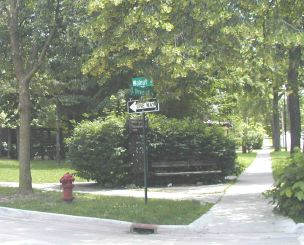 I
I
|
|
In 1899 Gomberg was promoted to Assistant
Professor. At the same time he and Sophia moved into a frame
house at 1101 East University
Avenue.(II)
This is where he was living when he wrote the 1900 paper on
triphenylmethyl that would ensure his enduring
fame.
Gomberg's reputation spread rapidly, both
locally and internationally. Within two years he was
promoted to Junior Professor of Organic Chemistry in 1902,
and only two years later to Full Professor.
The last promotion was unusually prompt.
Frederick G. Novy, Michigan's first D.S. in Chemistry, was
appointed Assistant Professor in 1891 and served nine years
as Junior Professor from 1893 before he was promoted to
Professor.(n)
|
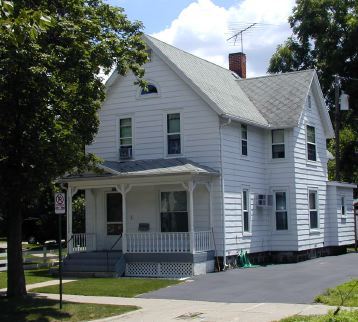 II II
|
|
Local pride in Gomberg's accomplishments
is evident in the 1905 Memorial Tribute to Prescott by the
University Senate, (p)
"The worth of such a
clear-headed, big-hearted instructor
[Prescott] to the students who
are fortunate enough to come under his influence is
greater than gold, and it is no wonder that the Chemical
Laboratory of this University became the birthplace of
such chemists and Wrampelmeier of London, Young of
Northwesern, Dennis of Cornell, Senier of Ireland, Hesse
of Germany, the late Henry Parsons of New York, and
our own
Gomberg, whose epoch-making researches on the valence of
Carbon have brought to the University great honor from
the leading chemists of the
world."
|
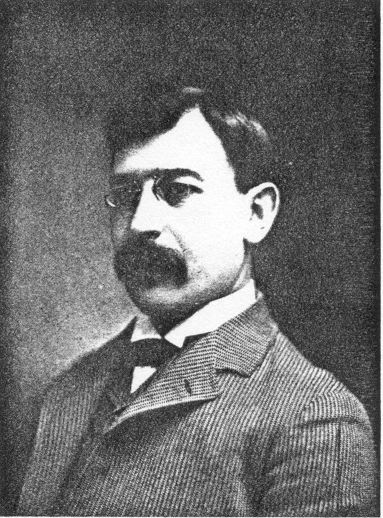
|
|
Upon his becoming Professor at the age of
38, Gomberg and his sister moved to a much larger home (now
divided into apartments) two blocks closer to the University
at 841 East University
Avenue.(III)
|
The Gombergs must have been pleased at
how they had prospered in the 20 years since coming to
America. In 1908 they moved to 725
Oxford
Road,(IV)
a home so large that it has since served as a fraternity
house. In July 2000 it is being remodeled to serve as a
residence for nuns, according to a workman, who was
surprised to hear that it had been the residence of a
bachelor and his sister
|
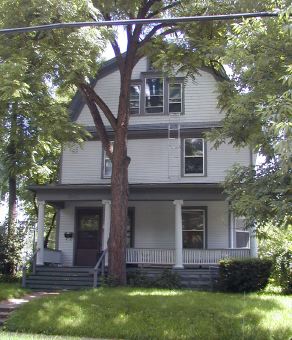 .III .III
|
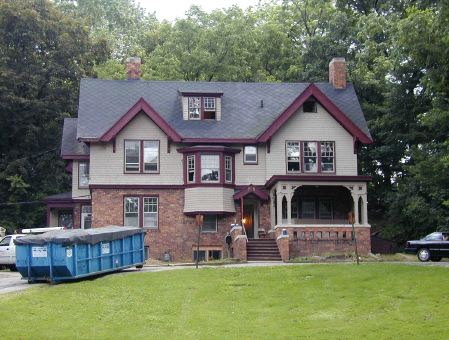 IV IV
|
|
Gomberg was most reluctant to leave Ann
Arbor. During the First World War, despite the repeated
blandishments of James Flack Norris, who wanted him to move
to Washington for research on poison gases at the Bureau of
Mines, Gomberg preferred to remain in Ann Arbor and to do
his bit by working on improved syntheses of mustard gas in
his own laboratory. Even in wartime he gave high priority to
his teaching responsibilities, as can be seen in the
following passage from a May 25, 1918, letter to
Norris:
"I am still continuing my work
on mustard gas, but as one of my two assistants has left
me last week, - to enter military service , - the
progress is bound to be even slower than previously.
The approaching
examination period will also rob me of time needed badly
for the mustard gas work. I shall
probably be through with the University work about the
middle of June, and shall wish to give my time wholly to
some sort of work on war problems, either in Washington
or here."
|
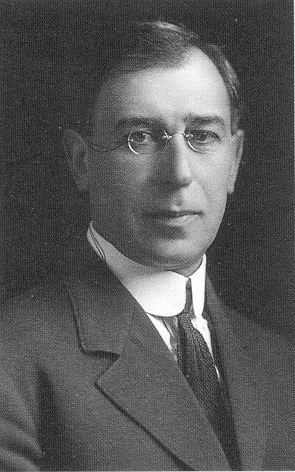
|
|
His accomplishments as a teacher are
apparent in the following anecdote in a 1936 letter to
Gomberg from Lee Cone Holt:
"One third of a century ago a
recent graduate of a small California college walked
across the campus of the University of Michigan toward
the Chemical Laboratory. Within fifty feet of the
laboratory door a plumber in overalls approached. Just as
the young man passed the plumber the latter dropped his
tools and stood with an astonished look on his face. The
plumber was a medical student from the same small Pacific
Coast college that the young man had more recently left.
Only a few words could be exchanged with the busy plumber
but those few words had an enormous influence on the life
of the new comer. The plumber said,
"If you have come
here to study chemistry go at once to an instructor named
Gomberg. I have just had his lecture course in organic
chemistry and he is such a marvelous teacher that I am
sure he must also be a wonderful man to work
with." Within five minutes the
California graduate was in earnest conversation with you.
I was that graduate and you know the story from there on
as intimately as do I."
|
|
Probably by the late 1920s the Gombergs
had moved two blocks further east to 712
Onondaga,(V)
a charming Tudor home where they lived after his
retirement.
Gomberg died in 1947 and his sister some
years later. They left an estate worth $600,000 as an
endowment to the Chemistry Department to support student
fellowships.
|
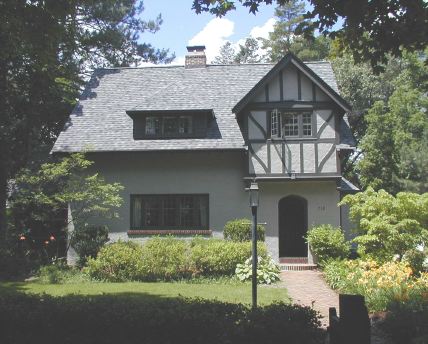 V V
|
|
As his colleagues and former students
Schoepfle and Bachmann wrote in
1947:(ba)
"All evidences of his
attainments were received with modesty that was one of
his characteristic traits. He never sought preferment,
and all forms of academic advertising were alien to his
soul."
"A great teacher and scholar, he
inspired his students by his methods and ideals, and his
colleagues by the vigor and clarity of his mind. To this
greatness he added an innate kindliness and unassuming
modesty that endeared him to all."
He wore this modesty to the end of his
days, volunteering incognito as an analyst in the Ann Arbor
hospital laboratory during World War II. On his death the
Ann Arbor News reported "In accordance with Prof.
Gomberg's instructions, no funeral services will be held and
the body will be cremated."(aan)
For more than fifty years Ann Arbor had
no monument at all to Gomberg or to his momentous discovery.
On the centennial of his paper "Triphenylmethyl, a Case of
Trivalent Carbon" a symposium was held in his memory at Ann
Arbor and a plaque was installed designating a National
Historic Chemical Landmark.
|
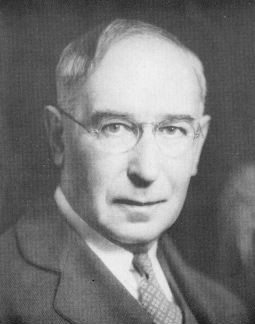
|
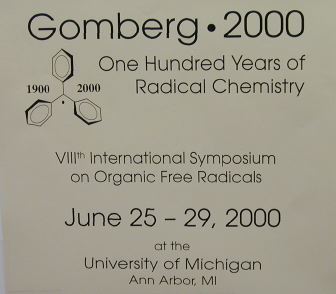
|
NATIONAL HISTORIC
CHEMICAL LANDMARK
THE DISCOVERY OF
ORGANIC FREE
RADICALS
University of Michigan
1900
In 1900, Moses Gomberg, Professor of
Chemistry at the University of Michigan, confirmed the
existence of a stable, trivalent organic free radical;
triphenylmethyl. In so doing, he challenged the then
prevailing belief that carbon could have only four chemical
bonds. Gomberg's discovery made a major contribution to
theoretical organic chemistry and fostered a field of
research that continues to grow and expand. Today, organic
free radicals are widely used in plastics and rubber
manufacture, as well as medicine, agriculture and
biochemistry.
American Chemical
Society_________ June 25,
2000
|
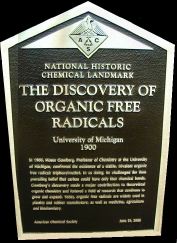
|
I am grateful to Professors N. A. Porter, Christoph Rüchardt,
and P. A. S. Smith
and to Ms. Camilla MacKay of the Michigan Graduate Research Library
for help in compiling this page.
For permission to use the historical photos and to quote from
Gomberg's correspondence
I am grateful to the Bentley Historical Library, University of
Michigan.
Notes
(a) Most of the information about
Gomberg's academic career and addresses is drawn from volumes of the
"Calendar of the University of Michigan" and Annual Reports of the
President to the Board of Regents.
(aan) "Prof. Gomberg,
Dintinguished Chemist, Dies." Ann Arbor News, Feb. 12, 1947,
p. 1.
(b) For other Gomberg biographies
from which some of this material is drawn see:
a. C.S. Schoepfle and W. E. Bachmann.
"Moses Gomberg, 1866-1947." J. Am. Chem. Soc.
1948, 69, 2921-2915.
b. J. C. Bailar, Jr. "Moses Gomberg."
Biographical Memoirs of the National Academy of Science
1970, 41, 141-173.
c. A. J. Ihde. "The History of Free Radicals
and Moses Gomberg's Contributions." Pure and Applied
Chemistry 1967, 30, 1-16.
d. J. M. McBride. "The Hexaphenylethane
Riddle." Tetrahedron 1974, 30,
2009-2022.
e. C. Walling. "Moses Gomberg." Proceedings
of the R. A. Welch Foundation Conferences on Chemical Research.
XX. American Chemistry-Bicentennial, 1977,
72-84.
(n) E. R. Long, "Frederick George
Novy." Biographical Memoirs of the National Academy of
Science, 33, 326-350. When in 1882, four years before
Gomberg, Novy began university studies at Michigan at the age of 18,
his family, who had immigrated to Chicago from Bohemia in 1864, moved
to Ann Arbor, suggesting at least the possibility that other family
members may have accompanied Gomberg. Although Novy's home listing in
the Calendar was changed from Chicago to Ann Arbor in 1883, Gomberg's
was kept as Elizabetgrad, Russia, until he graduated in 1890. Novy
stayed in Ann Arbor, like Gomberg, until his death 75 years later.
(p) "Albert Benjamin Prescott In
Memoriam" Privately Printed, Ann Arbor, 1906.
(s) Miss Gomberg's first name is
given as Sophia on her high school diploma and on documents in
Germany, but she is called Sonia in Bailar's Biographical Memoir of
Gomberg (bb) and in the Ann Arbor News report of Gomberg's
death.
copyright
© 2000 J.M.McBride